Abstract
1. Afferent discharges were observed in dissected filaments of nerves to the adrenal gland in the rabbit and cat.
2. Systemic intravenous and close intra-arterial injections of (-)-adrenaline and (-)-noradrenaline caused cessation or depression of the spontaneous firing rate.
3. Intravenous injection of acetylcholine and electrical stimulation of the splanchnic nerve also depressed the afferent discharge rate.
4. Modification of blood pressure levels by chemical and mechanical means did not modify the afferent discharge.
5. Alpha blocking agents (ergotamine and phenoxybenzamine) blocked the effect of (-)-adrenaline on the firing rate. Beta blocking agents (dichloroisoprenaline and propranolol) were without effect.
6. It is suggested that an afferent system is present in the adrenal gland. Within this system are chemosensitive receptors which may constitute the afferent limb of a local feed-back loop involved in adrenal catecholamine release.
Full text
PDF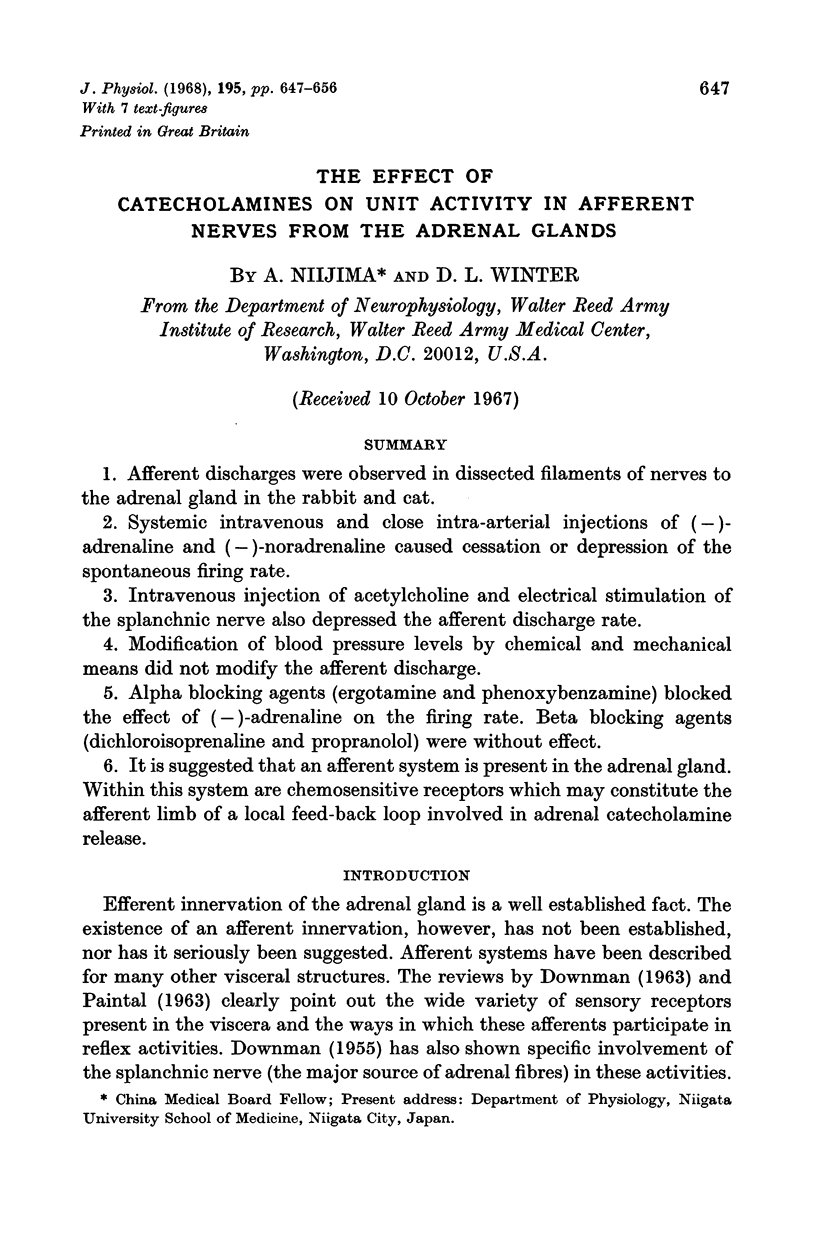
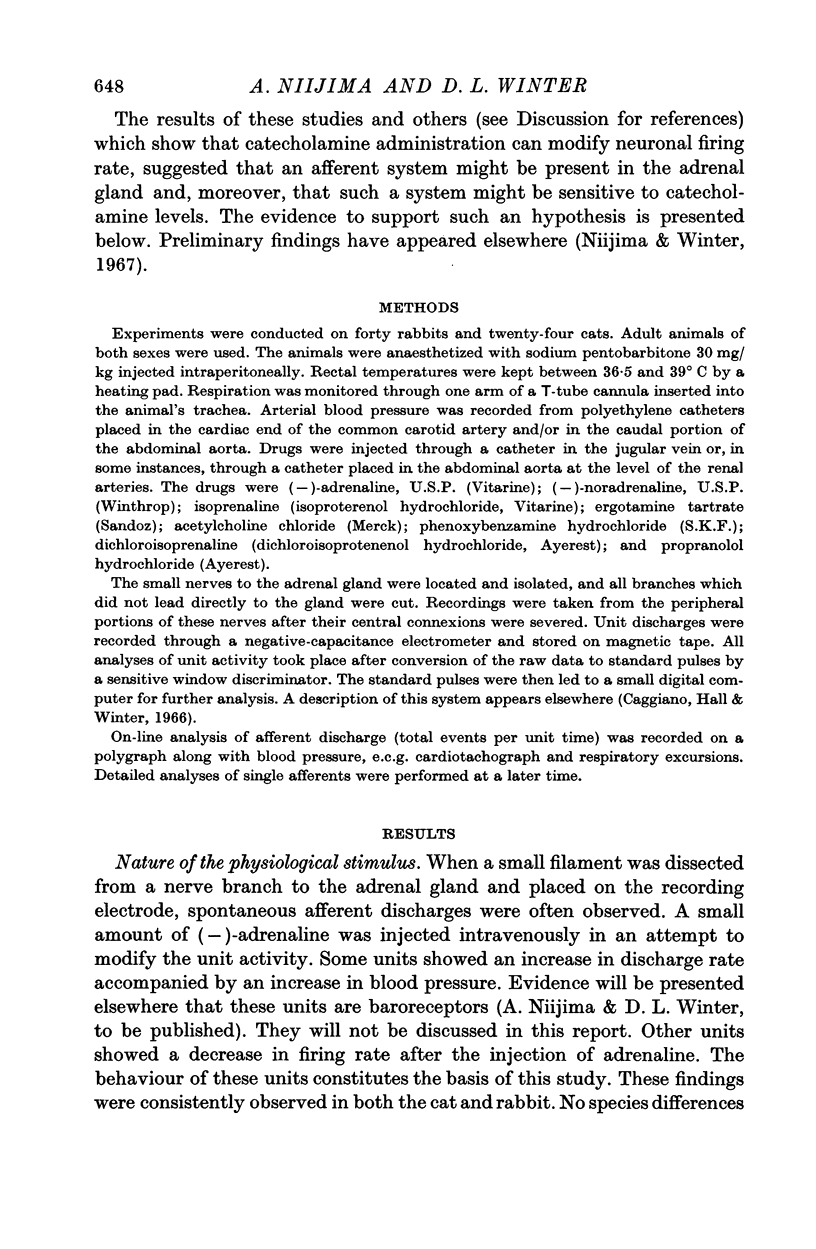

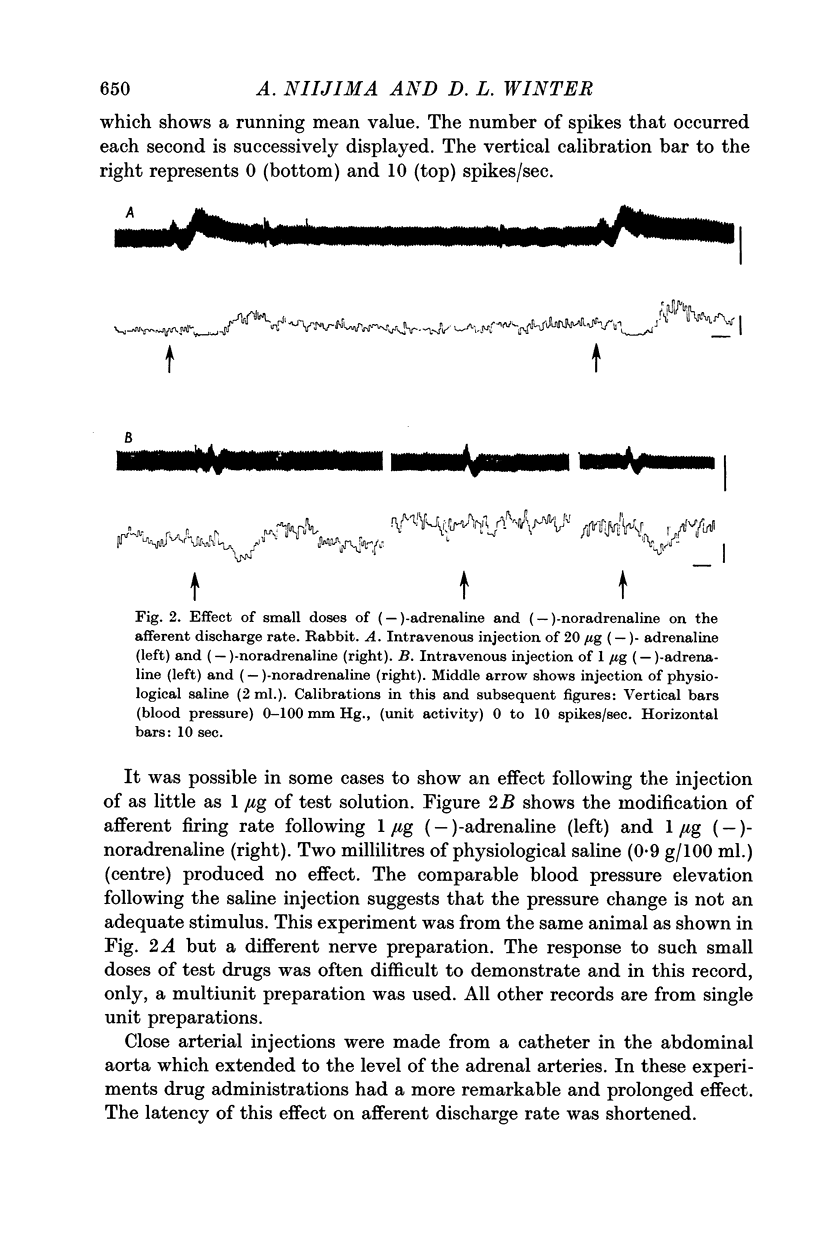
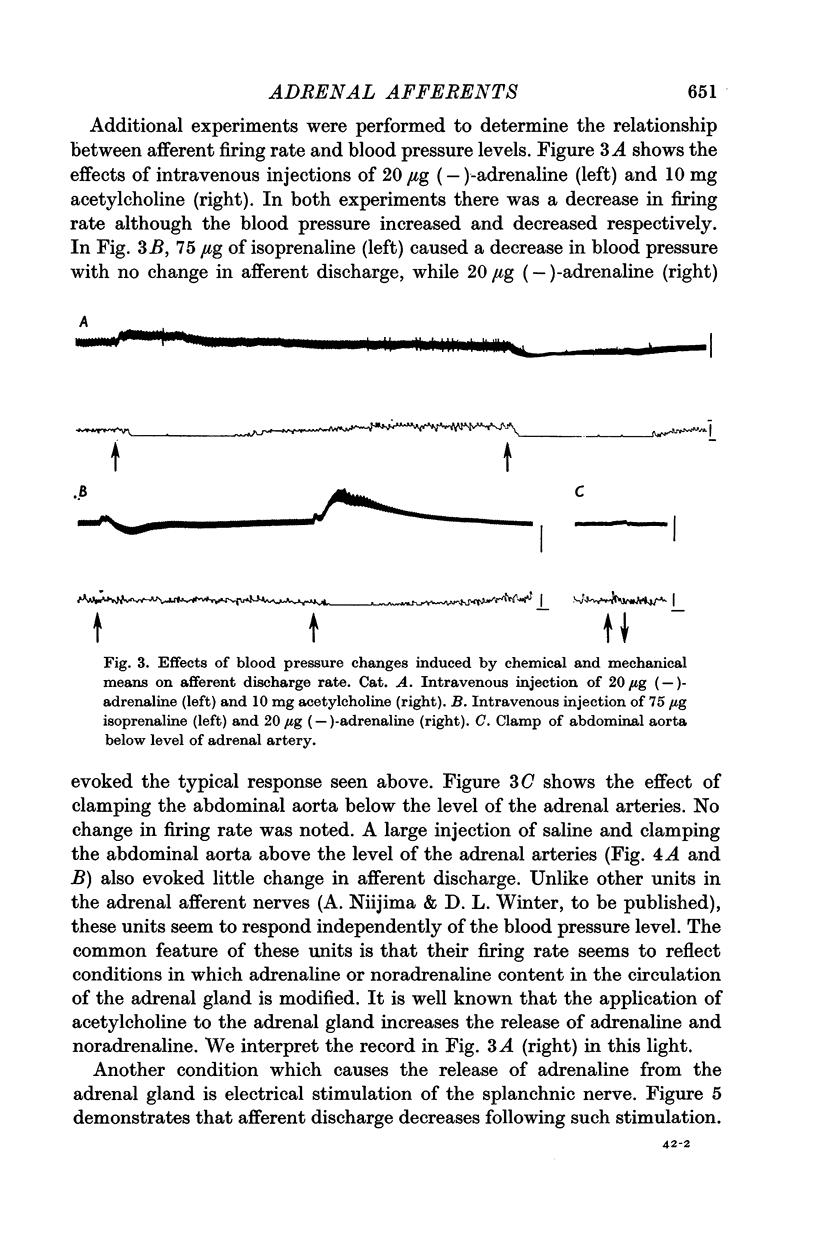
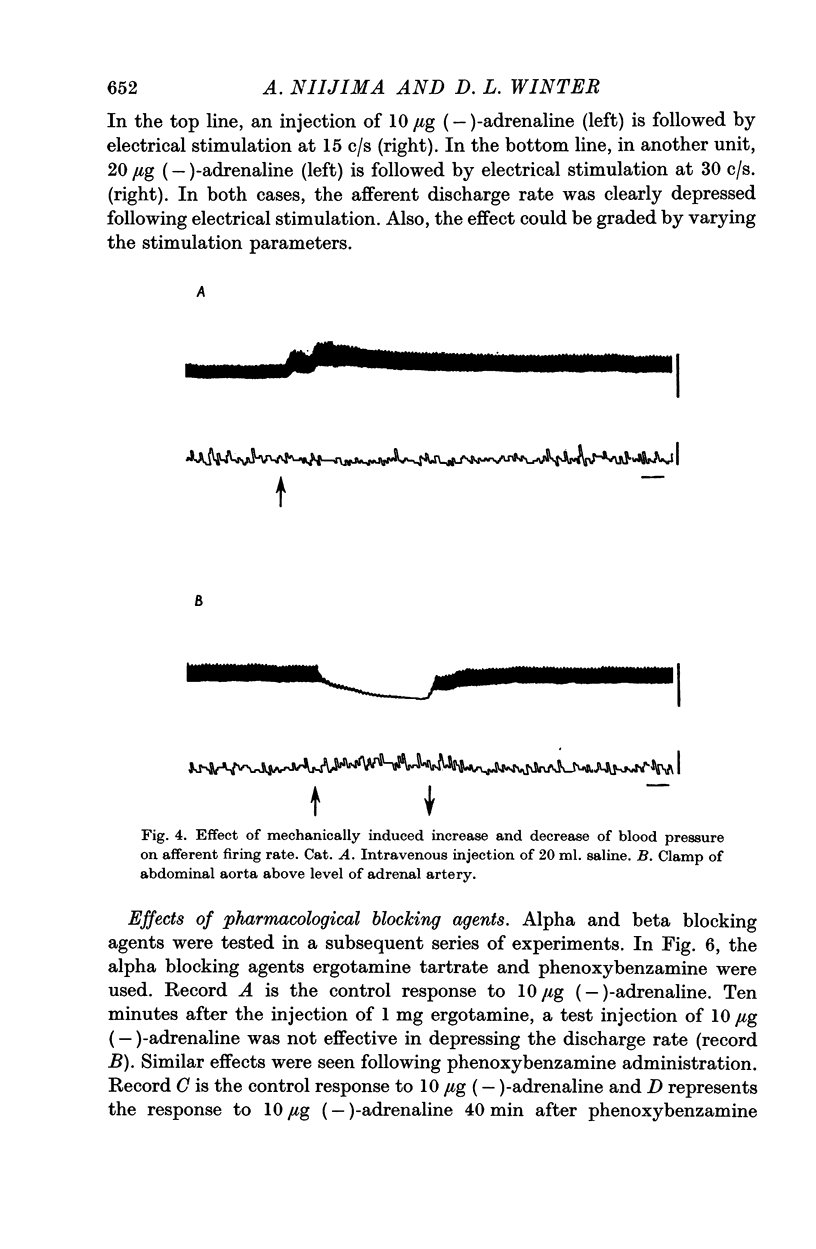
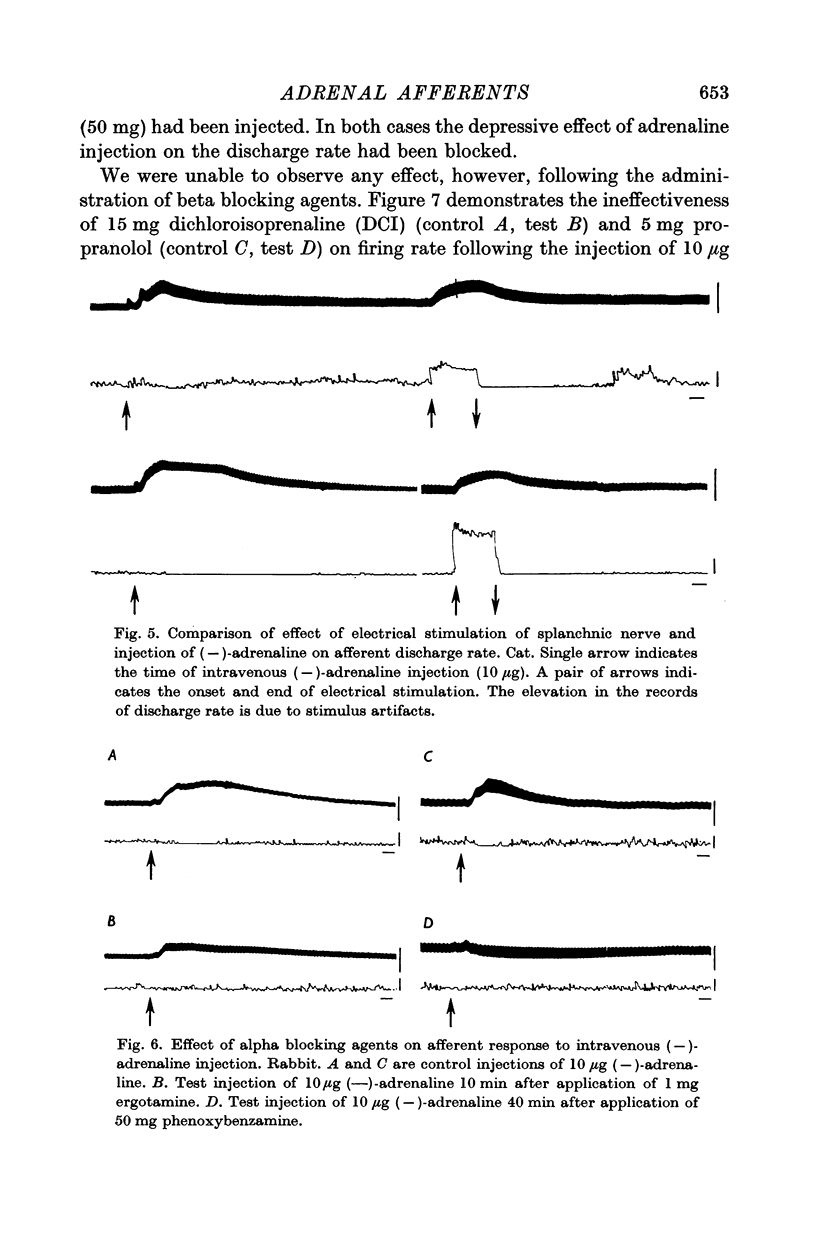
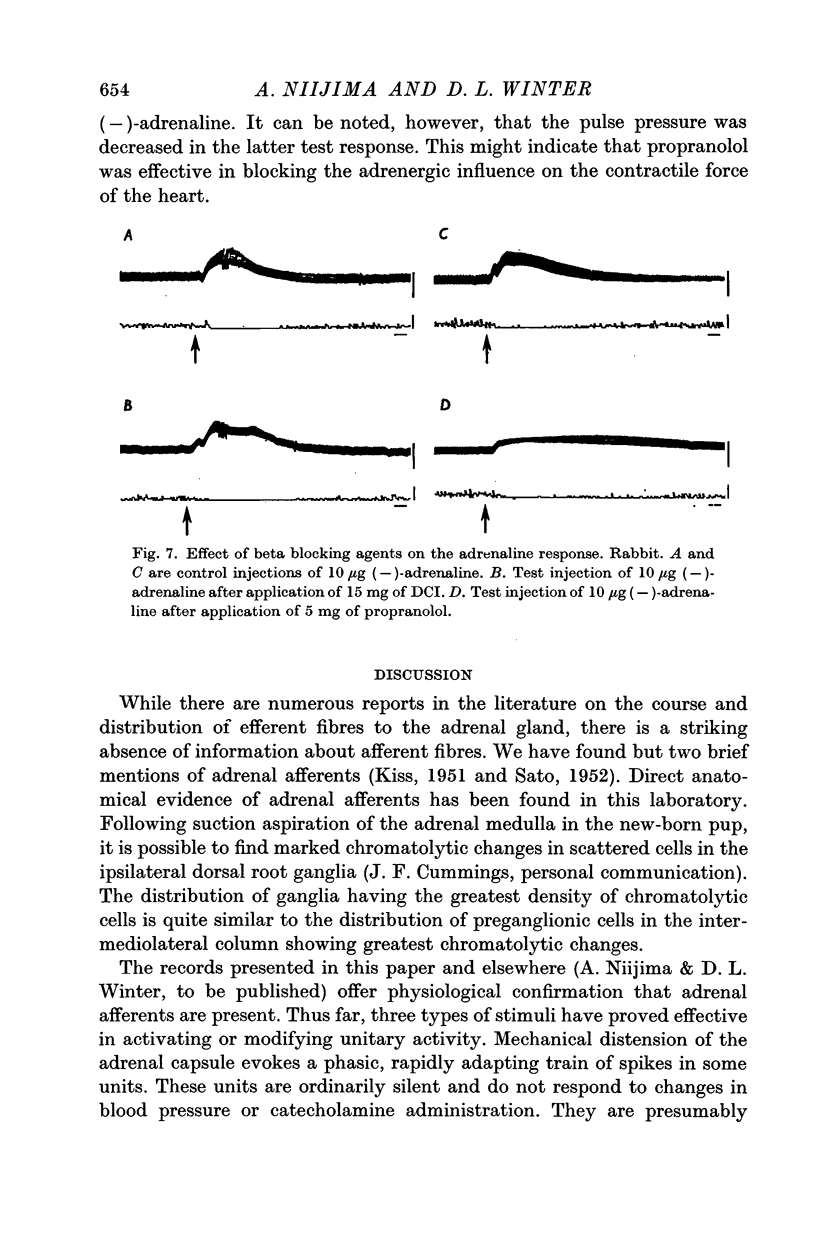
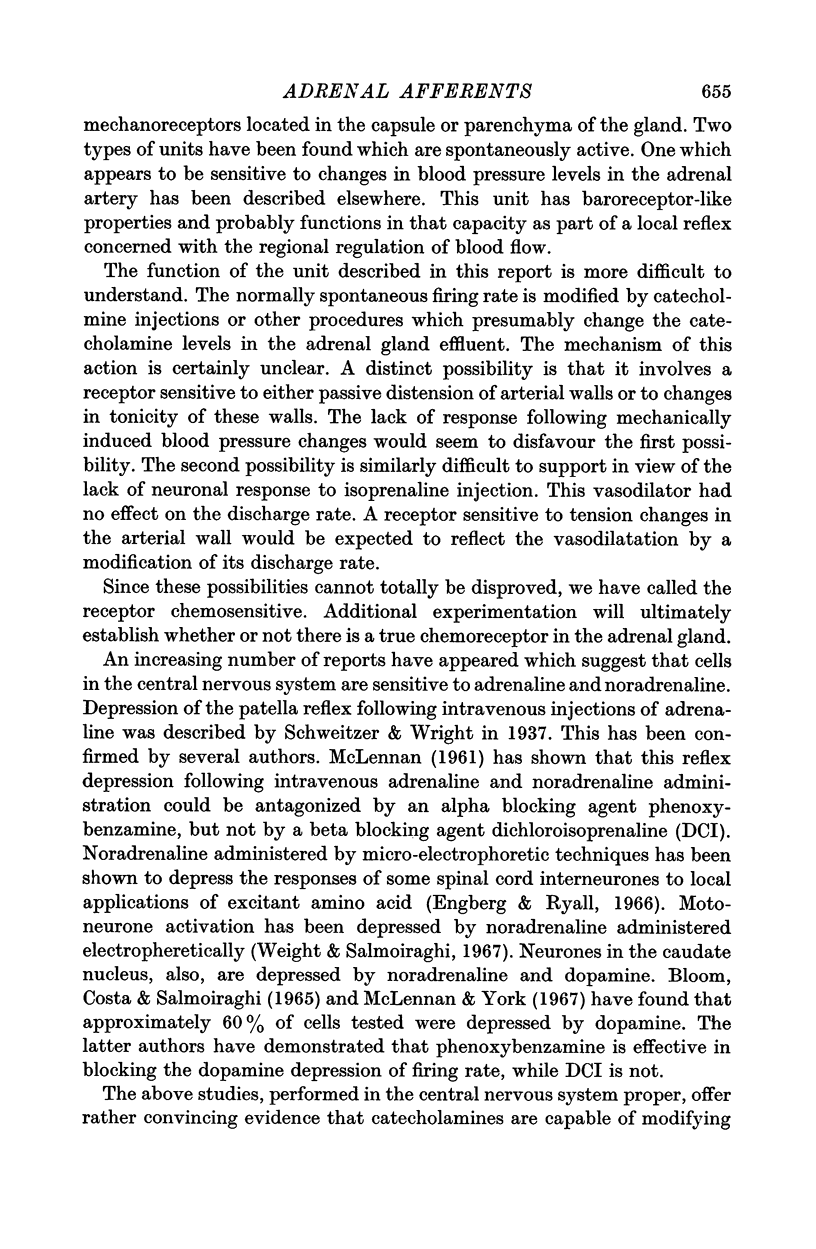

Selected References
These references are in PubMed. This may not be the complete list of references from this article.
- Bloom F. E., Costa E., Salmoiraghi G. C. Anesthesia and the responsiveness of individual neurons of the caudate nucleus of the cat to acetylcholine, norepinephrine and dopamine administered by microelectrophoresis. J Pharmacol Exp Ther. 1965 Nov;150(2):244–252. [PubMed] [Google Scholar]
- DOWNMAN C. B. Skeletal muscle reflexes of splanchnic and intercostal nerve origin in acute spinal and decerebrate cats. J Neurophysiol. 1955 May;18(3):217–235. doi: 10.1152/jn.1955.18.3.217. [DOI] [PubMed] [Google Scholar]
- Engberg I., Ryall R. W. The inhibitory action of noradrenaline and other monoamines on spinal neurones. J Physiol. 1966 Jul;185(2):298–322. doi: 10.1113/jphysiol.1966.sp007988. [DOI] [PMC free article] [PubMed] [Google Scholar]
- KISS T. Experimentell-morphologische Analyse der Nebenniereninnervation. Acta Anat (Basel) 1951;13(1-2):81–89. [PubMed] [Google Scholar]
- McLennan H. The effect of some catecholamines upon a monosynaptic reflex pathway in the spinal cord. J Physiol. 1961 Oct;158(3):411–425. doi: 10.1113/jphysiol.1961.sp006777. [DOI] [PMC free article] [PubMed] [Google Scholar]
- McLennan H., York D. H. The action of dopamine on neurones of the caudate nucleus. J Physiol. 1967 Apr;189(3):393–402. doi: 10.1113/jphysiol.1967.sp008175. [DOI] [PMC free article] [PubMed] [Google Scholar]
- PAINTAL A. S. VAGAL AFFERENT FIBRES. Ergeb Physiol. 1963;52:74–156. [PubMed] [Google Scholar]
- SATO A. Innervation of corpus suprarenale in human adult. Tohoku J Exp Med. 1952 Feb;55(2-3):259–271. doi: 10.1620/tjem.55.259. [DOI] [PubMed] [Google Scholar]
- Schweitzer A., Wright S. The action of adrenaline on the knee jerk. J Physiol. 1937 Jan 18;88(4):476–491. doi: 10.1113/jphysiol.1937.sp003454. [DOI] [PMC free article] [PubMed] [Google Scholar]


